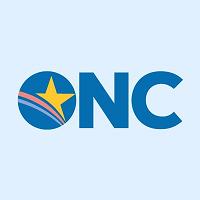 By Wes Barker and Wei Chang, ONC
By Wes Barker and Wei Chang, ONC
X: @ONC_HealthIT
Turning Evidence into Action
The ONC Cures Act Final Rule (Cures Rule) supports patients’ and providers’ access to electronic health information through Health Level Seven (HL7®) Fast Healthcare Interoperability Resources (FHIR®) application programming interfaces (APIs). To ensure that secure, standardized FHIR APIs certified through the ONC Health IT Certification Program can be accessed and used “without special effort,” the Cures Rule included a requirement to ensure that app developers could readily lookup the service base URLs (i.e., “FHIR endpoints”) associated with enabling patient access. These FHIR endpoints make it possible for an app to “know where to go” to help a patient request their health information.
Since the publication of the Cures Rule, the ONC-led Lantern Project team has been hard at work building technology to monitor these APIs and their associated service base URLs. Through its work, Lantern identified possible challenges to implementing these API requirements: (1) the lack of standardization for endpoint list publication and (2) difficulty mapping endpoints to health care organizations.
Building Consensus
ONC’s HTI-1 proposed rule, released in April, proposes updates to the ONC Health IT Certification Program’s requirements applicable for developers certifying health IT to the “Standardized API for Patient and Population Services” certification criterion. One proposal was to revise and standardize the service base URL publication requirement. The proposal in the HTI-1 proposed rule to revise and standardize the service base URL publication requirement builds upon our consensus-driven work and several years of evidence-building. Standardization of endpoint publication was discussed at multiple public workshops and meetings, where ONC and partners agreed on possible solutions that evolved into ONC recommendations and ultimately, ONC’s proposed update.
Additionally, we are excited to see industry-led activity such as the Patient-Access Brands and Endpoints specification, which aims to not only provide standardized publication of endpoints and organization mappings, but also provides robust user experience when connecting patients to their health records. We eagerly look forward to the next phase of this activity.
The Current State
Endpoint List Publication
As of the end of 2022, we discovered through the public Certified Health IT Product List (CHPL) about 200 unique endpoint lists across all certified API modules.
- 40% of the endpoint lists included production endpoints — with 1 in 4 of those published as a bundle of FHIR Endpoint resources.
- The remaining endpoint lists (60%) included no production endpoints (50%) or were published in non-machine-readable formats (10%).
These results are similar to what we saw in the first half of 2023 and confirmed our early predictions that publication would not be uniform across certified API developers.
Mapping Endpoints to Organizations
In addition to addressing the lack of a common framework around endpoint publication, there is also a need to improve mapping of endpoints to organizations. We found that relying only on the name of the organization is insufficient and inefficient for matching endpoints to organizations, especially when it comes to health care systems that service many providers. To enable broad patient access to their health information, app developers need to tie health care providers and provider organizations to their certified health IT, if not their physical endpoints.
An endpoint without specific organization information limits how the app can connect the patient to their electronic medical record since, ultimately, the patient knows their doctor, not the doctor’s technology stack. An analysis of the endpoints currently ingested into Lantern shows that only about 1 in 4 lists provide the organization information about their technology users. More uniformity and richer detail can make it easier to connect patients to their health information managed by their specific health care provider.
What’s Next?
To learn more about this initiative, check out the Lighting the Way for FHIR API Implementation report.
Going forward, we plan to expand the Lantern Project and continue to integrate additional data as they become available while striving towards the goal of making FHIR APIs usable “without special effort”. Working towards this goal, programmatic downloads are now available on Lantern, and the download files will be posted daily to ONC’s GitHub.
This article was originally published on the Health IT Buzz and is syndicated here with permission.
